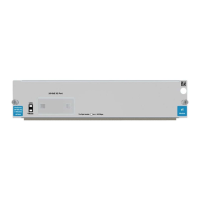40 • Installation & Quick Start HP NonStop SSH Reference Manual
To Connect to a Remote SSH Daemon with the NonStop SSH Client
You can create shell sessions with a remote SSH daemon both with the OSS SSH client (via SSHOSS) and the Guardian
SSH client ( via SSH).
From an OSS shell, run the SSHOSS client to create a secure shell session with a remote system as follows:
/home/mh: /G/data1/mhssh/sshoss comf.mh@10.0.0.201
comForte SSH client version T9999G06_28Dec2007_comForte_SSHOSS_ 0077
WARNING: REMOTE HOST IDENTIFICATION UNKNOWN!
The host public key fingerprint is
babble: xelol-vifez-cefis-gimiv-nepof-zemid-latut-zahoz-hyrun-hipop-hixex
MD5: 04:bb:3c:a0:66:d4:bf:e3:60:b8:f3:31:49:d9:86:a6
Continue and add the host to the knownhost store(yes/no)? yes
Trying password authentication.
Enter m.horst@10.0.0.201's password:
Add password for m.horst@10.0.0.201 to the password store (yes/no)? no
Have a lot of fun...
m.horst@np-dev:~>
Note: For a production installation you may want to copy the SSHOSS program to an OSS standard bin directory,
renaming it to "ssh". Alternatively, you may also create a symbolic link.
At the TACL prompt, run the SSH client to execute a command on a remote system as follows:
$DATA1 MHSSH 286> run ssh m.horst@10.0.0.201 whoami
comForte SSH client version T9999H06_28Dec2007_comForte_SSH_0077
You have no private keys in the key store.
Trying password authentication.
Enter m.horst@10.0.0.201's password:
Add password for m.horst@10.0.0.201 to the password store (yes/no)? no
m.horst
$SYSTEM ZSSH 287>
To Establish a Port Forwarding Tunnel with the NonStop SSH Client
Forwarding Local Port to Remote Port
You can create port forwarding channels for both the OSS SSH client (SSHOSS) and the Guardian SSH client (SSH).
The following example illustrates how to establish a port forwarding tunnel for telnet sessions over SSH, using the
Guardian SSH client:
$US SSH90 46> run ssh -N -L 5021:localhost:23 joe@10.0.0.111
SSH client version T9999H06_08Jun2011_comForte_SSH_0090
The –N option suppresses the start of a remote shell. The –L option tells SSH2 to listen on port 5021 and forward any
incoming connection to the remote SSH daemon and further to a telnet server on the same host, listening on port 23. The
"localhost" in the command line refers to the target host of the forwarding tunnel, i.e. when using -L option this is the
remote host.
After the SSH session is successfully established, the SSH process will wait until the SSH session is terminated or it is
stopped. Thus, if you hit <break>, you can get the TACL prompt back and try to connect a telnet session over the SSH
tunnel:
<break>
$US SSH90 47> telnet 127.0.0.1 5021
TELNET Client - T9558H01 - (10MAY07) - (IPMAAG)
Copyright Tandem Computers Incorporated 2004
Trying...Connected to 127.0.0.1.
Escape character is '^]'.
Welcome to SuSE Linux 8.2 (i586) - Kernel 2.4.20-4GB (0).
np-dev login:

